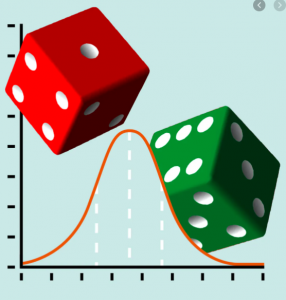
In this post, you will learn about joint and conditional probability differences and examples. When starting with Bayesian analytics, it is very important to have a good understanding around probability concepts. And, the probability concepts such as joint and conditional probability is fundamental to probability and key to Bayesian modeling in machine learning. As a data scientist, you must get a good understanding of probability related concepts.
Joint & Conditional Probability Concepts
In this section, you will learn about basic concepts in relation to Joint and conditional probability.
Probability of an event can be quantified as a function of uncertainty of whether that event will occur or not. Let’s say an event A is whether rolling a die will result in 2. You may want to know about the uncertainty related to whether event A will occur or not. This can also be stated as what is the probability that the event A will occur. Mathematically, probability of whether event A will occur or not can be denoted as P(A).
When we talk about two events, then the concept of joint and conditional probability comes into picture. Taking the rolling die as example, let’s consider another event B such as whether rolling a die will result in one of the event numbers such as 2, 4 or 6. The probability of an event B occurring can be denoted as P(B).
What is Conditional Probability?
Conditional probability is probability of an event given that another event has occurred. Going by the example sighted above, conditional probability in terms of event A and B can be defined as probability of event A (rolling a die results in 2) given event B (rolling the die result in even number 2, 4 or 6) has occurred. Mathematically, it can be written as P(A | B).
What is Joint Probability?
Joint probability of two events A and B is termed as the product rule of probability and can be represented mathematically as the following:
P(A, B) = P(A | B) * P(B)
The above can be read as the following:
Joint probability P(A, B) of event A and B is the product of probability of event A given event B occurred and the probability of event B. Going by the rolling die example, joint probability of event A (rolling die results in 2) and event B (rolling die results in an even number) is product of probability of event A (rolling die results in 2) given event B (rolling die resulted in even number) and probability event B (rolling die resulted in the even no.)
5 Examples of Joint & Conditional Probability
Here are some examples of joint and conditional probability:
- Probability P(A, B) that the floor is wet (event A) and rainfall occured (event B) is the product of probability of floor being wet given rainfall happened P(A|B), and, probability that rainfall happened P(B)
- Probability P(A, B) that a person is suffering from cancer (event A) and the person smokes (event B) is the product of probability that person suffers from cancer given person smokes P(A|B), and, probability that the person smokes P(B)
- Probability P(A, B)that the company is successful (event A) and the company makes great products (event B) is the product of probability that the company is successful given the company builds great products P(A|B), and, probability that the company builds great product P(B).
- Probability P(A, B) that the team wins the game (event A) and the team practices well (event B) is the product of the probability that the team wins given team practices well P(A|B), and, probability that the team practices well P(B)
- Probability P(A, B) that the person gets the software job (event A) and the person is an engineer (event B) is the product of the probability that the person gets a job given he/she is an engineer P(A|B), and, the probability that the person is an engineer P(B)
- Mathematics Topics for Machine Learning Beginners - July 6, 2025
- Questions to Ask When Thinking Like a Product Leader - July 3, 2025
- Three Approaches to Creating AI Agents: Code Examples - June 27, 2025
I found it very helpful. However the differences are not too understandable for me